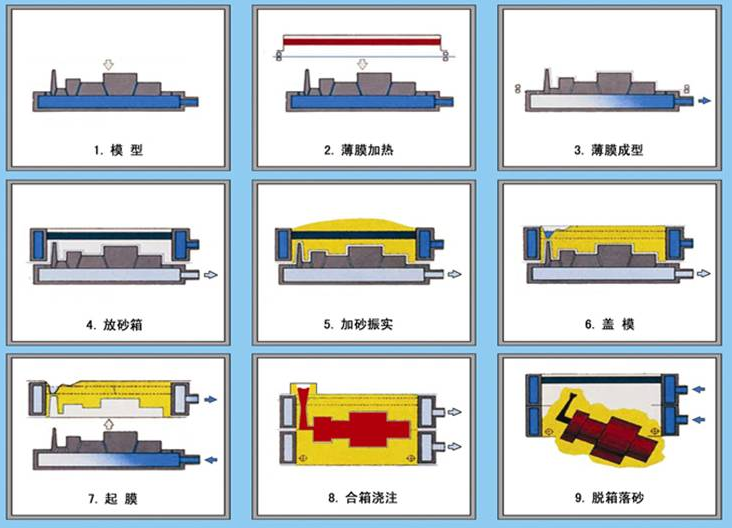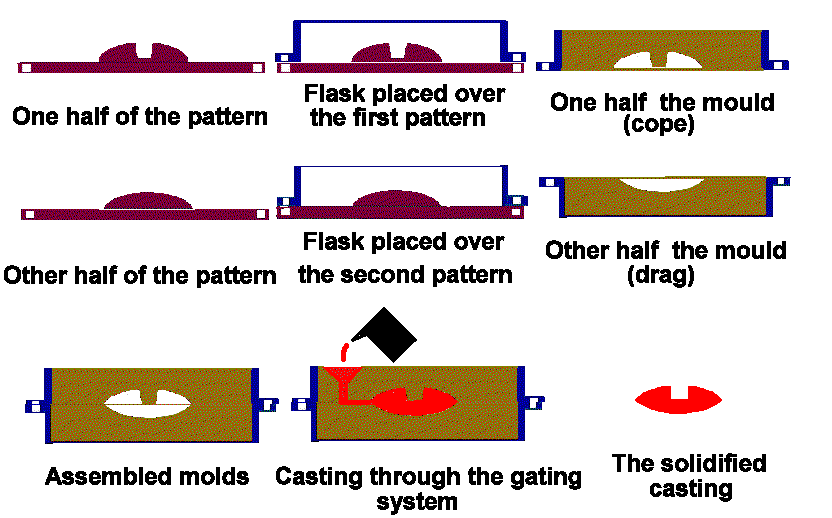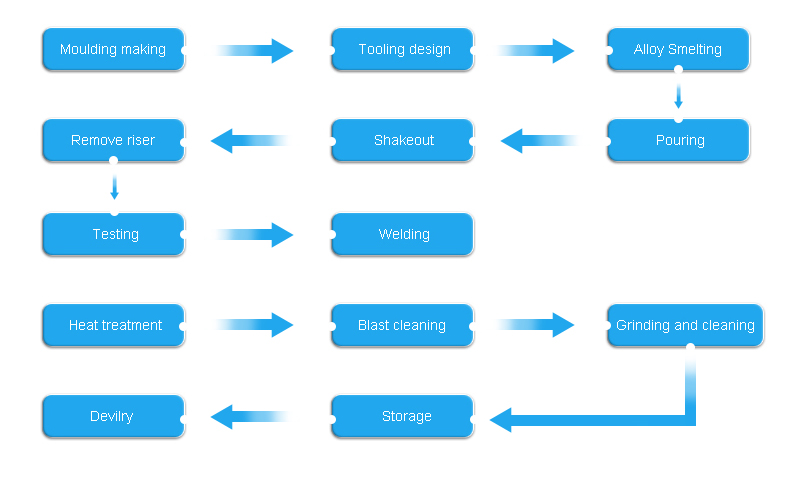It‘s basic casting process

Step 1: upper and lower templates were installed in the two stations, the template, look on the vent to flow;
Step 2 : baking cavity film, when the film is heated to a mirror, dropping the landing gear, open the vacuum valve, negative pressure film;
Step 3: spray paint and dry on the film;
Step 4: Place the flask and performed on the template vibration filling sand, Calibrating tank top surface;
Step 5: put the film back, plug in the vacuum pipe sand box vacuum system, and cut off the vacuum on the template;
Step 6: turn me, at the core;
Step 7: The same method of making the box;
Step 8:-fitting, casting, the casting process, the upper and lower box are plug has vacuum pipe vacuum system, the vacuum pipe vacuum system uses intelligent computer dynamic control, in order to achieve a real-time control of the lower tank vacuum, without setting the vent;
Step 9: beat box, shakeout, cleaning castings.

 Download Brochure
Download Brochure Product List
Product List

